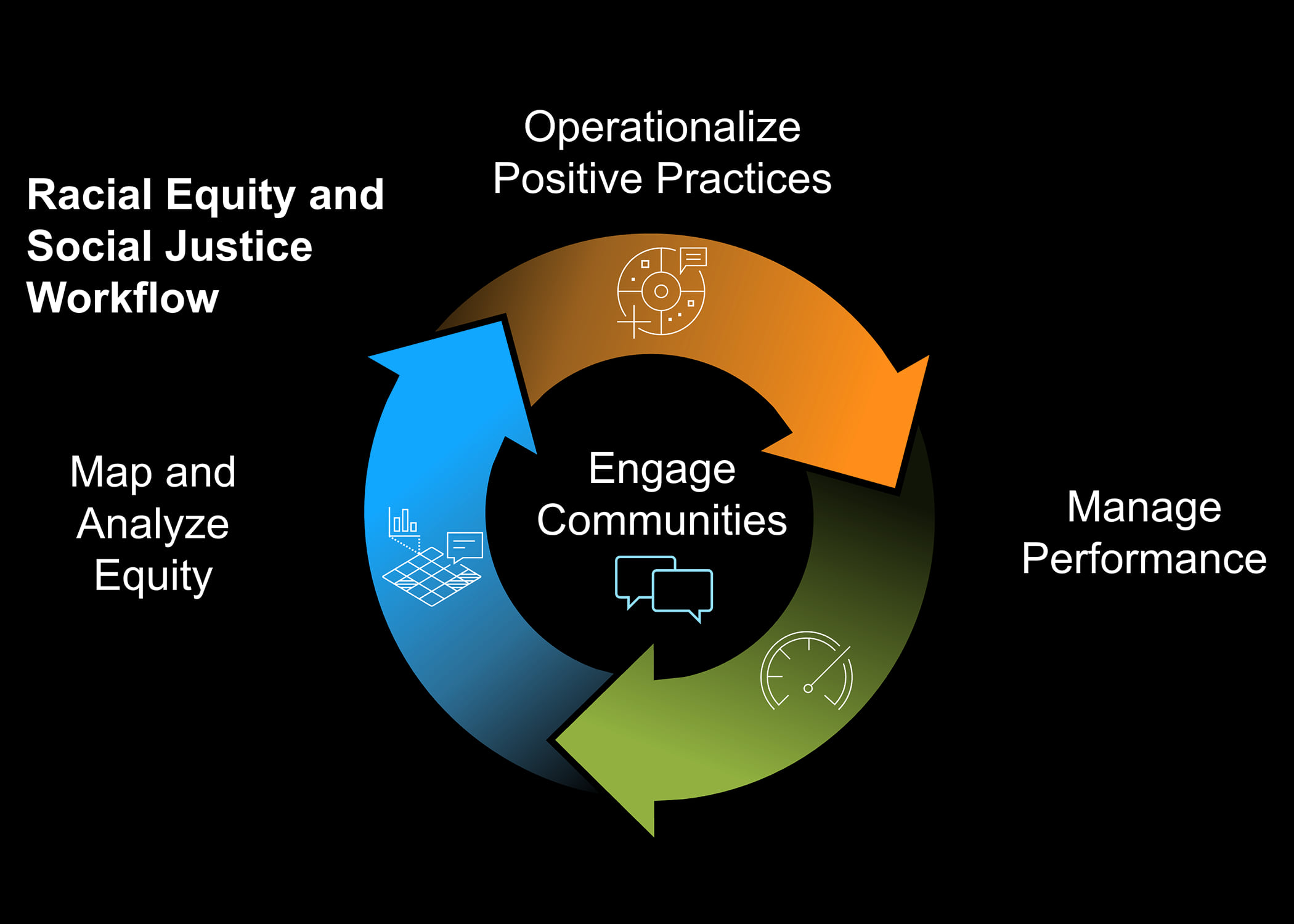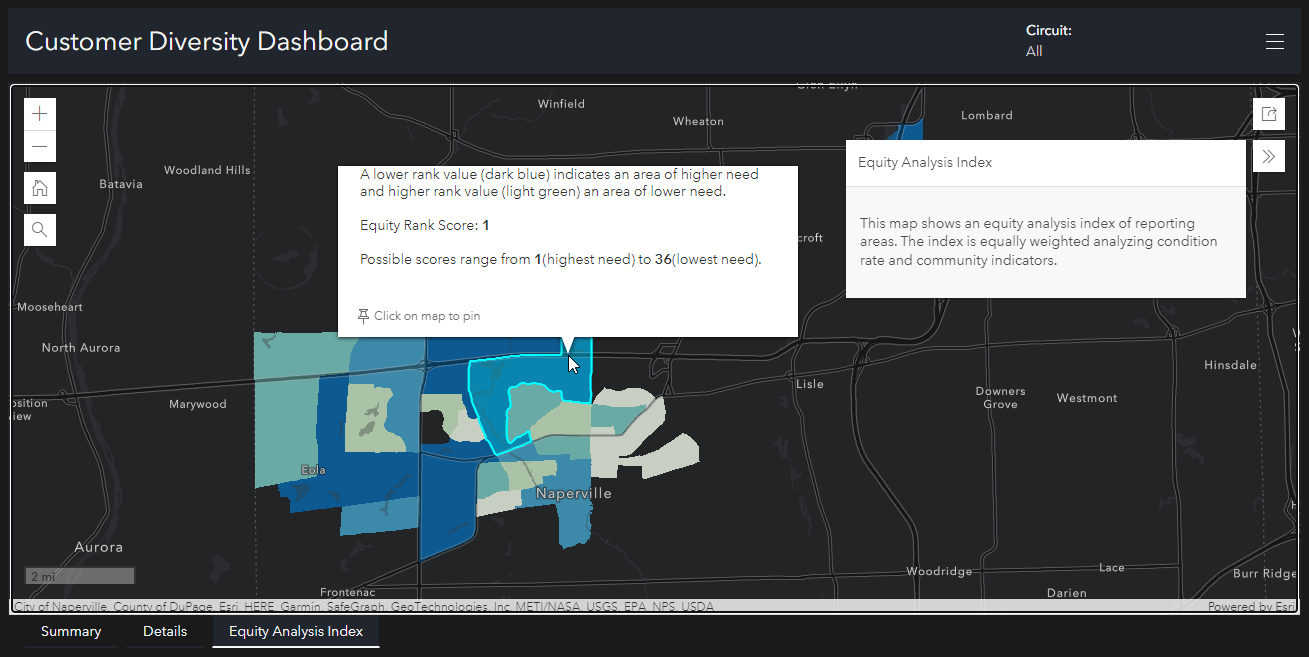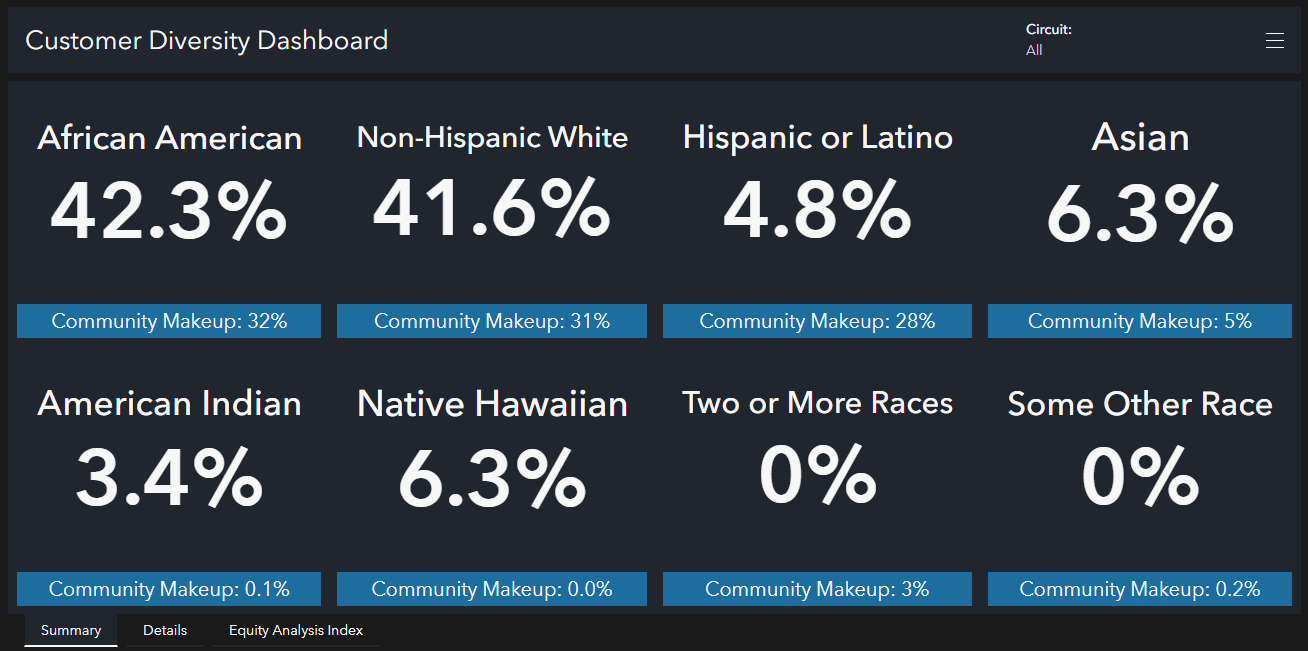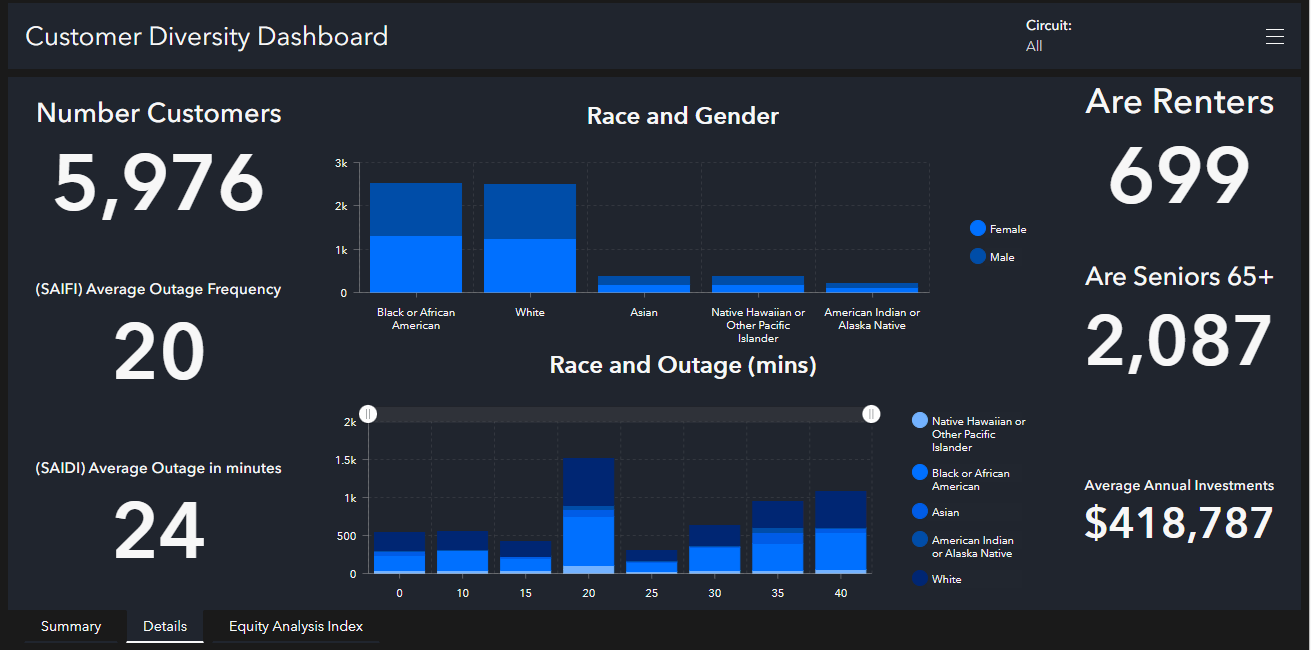So, you have just completed the essential steps to an equity analysis and you have an index layer for your utility. You feel empowered. You have an idea about what your organization needs. And are ready to take the next steps. But the question is: What should you do next? Should you use different variables in the analysis or get buy-in for this process from stakeholders who may not fully understand it yet? The short version is – Yes!! Spend time socializing your findings so they are understood by everyone involved; then review the determinants. Here are three things that will help you operationalize, share, and continue improving your system after you have an equity index layer.
Now what?
If you have an equity index layer, the hard part is done. Now it’s time to operationalize your equity index layer. The next steps are about implementing positive practices and at the center of this idea is engaging communities. We will go through three quite different ways to engage folks.

#1 Review Indicators
When doing this work, you will have both internal and external stakeholders that can lean in on the topic and provide guidance. Taking a moment to perform a review to evaluate the criteria used in the analysis will give you immediate feedback on what to change and what to keep. You will need to take your community characteristics index map, the community conditions map, and the equity index layer for review with your peers and people close to the issue. The goal is to review the indicators you used to build the index to start getting the buy-in and be willing to modify based on feedback. This step will help you get an idea about how folks with use the index.
#2 Operationalize your Equity Index Layer
Deploying the Social Equity Analysis Solution does a few things. It provides an ArcGIS Pro project, a web map, and an Equity Analysis Index app to be used as part of the full workflow. These all work in an integrated fashion so you don’t have to build your app. The equity analysis index app is ready-to-go once you have published the equity index layer. What it offers is a positive practice of engaging your communities by sharing the results both internally and externally with stakeholders. Sharing the analysis results helps to build transparency and accountability between organizations and communities. Leveraging the app to socialize the results is a positive way to keep folks engaged and aware of your initiative.

After chatting with some internal electric utility leaders, we decided to kick our equity index app up a notch. We combined another solution with our equity analysis to create an all-encompassing dashboard focused on customers. We added some American Community Survey (ACS) data and mocked-up business data. The goal is to allow internal teams to access a wealth of valuable knowledge, broken down by feeder.

Taking a broader view, the dashboard’s first glance provides valuable insight into how your company’s workforce compares to the community makeup. This allows you to ask important questions like, Is your company hiring from within these communities? Does your workforce reflects the demographics of the communities you serve? It also helps to get an idea of what to expect in the field. For example, we could add languages spoken, which can help front line folks improve customer service. Relatedly, the second view showcases detailed metrics that matter to your organization. You can easily gauge which groups are experiencing service hiccups, longer downtimes, and even see investments made in different parts of the system. The good thing here is that we can add or substract different factors. For example, we could add population density or income to the socio-strata. Or maybe a comparison of localized reliability score versus expected.
Moving forward, to using community feedback as a driver to change.

#3 Get community feedback
The last way to engage is connecting with the community. Giving the community a seat at the table and having shared ownership of results is the best way to build meaningful relationships while driving action. That means socializing the results far beyond your internal peer group. It means taking these results to the people and ground truthing your work. Creating transformative relationships with community partners and/or communities. This can be done several ways and there is no single right way to do it. Getting feedback can be done in a community meeting, through community partners, or with a sentiment survey. The goal here is to empower the community and have better outcomes.
Moreover, we all know that doing great equity work is at the root of your initiative. However, great equity work must be lifted up and amplified after you have created your equity index layer. The communities you serve, your business and your utility network are essential to the success of any equity initiative. How can you engage the community? Engaging stakeholders can be a challenge, but one way you can explore ways to increase civic participation is with ArcGIS Survey123.
Finally, Esri provides several resources to help organizations in their sustainability and resiliency efforts. The Racial Equity and Social Justice GIS Hub is the place to access additional resources and to request GIS assistance from Esri folks focused on this topic. Connect with us or provide feedback on GeoNet.
Article Discussion: